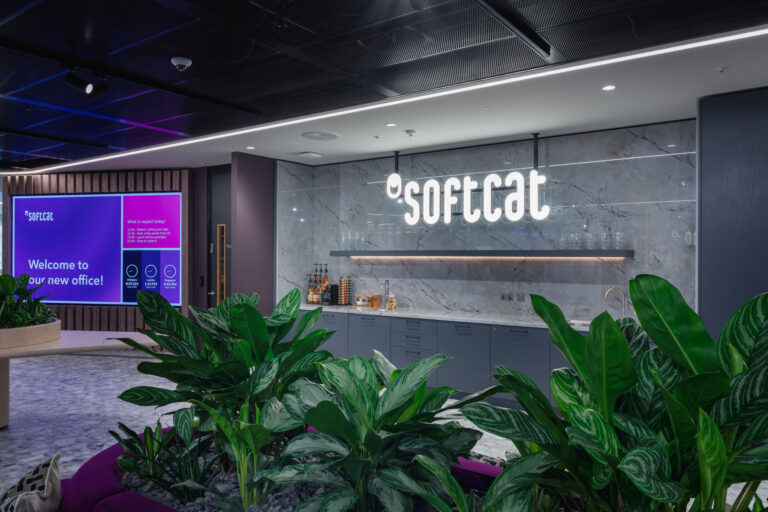
Are you making your employees ill?
Date
27 July 2020
Read length
5 min
There’s the short-term issue of day-to-day disruption and asking other employees to pick up the slack, as well as the longer-term costs associated with lost productivity, replacement cover, potential staff attrition and new staff training.
Illness isn’t good for business.
There’s the short-term issue of day-to-day disruption and asking other employees to pick up the slack, as well as the longer-term costs associated with lost productivity, replacement cover, potential staff attrition and new staff training. With sickness costing the UK economy in excess of £18 billion per year, an ageing workforce and a global talent shortage that’s made retaining the brightest and best a daily challenge, there’s a question that all good, employee-minded organisations should be asking – could you be making your employees ill?
Wellness drives employee engagement and is directly related to economic capacity. Research shows that those businesses with a high level of employee wellbeing outperform the stock market by 2-3% each year, proving that an unhealthy workplace is both unproductive and commercially crippling. As the Institute of Occupational Safety and Health (IOSH) says: “Workplace wellbeing and performance are complementary and a dependent part of psychologically and financially healthy organisations.”
The thought of the workplace or an organisation’s culture directly contributing to poor employee health is difficult to consider, but it is all too common. Sedentary behaviours, a mental health epidemic and workplace pressures to do more with less, are just some of the factors that can leave employees in poor health.
Although it may seem a new concept, wellbeing is far from a new idea. Amongst the first pioneers of employee wellbeing were the Cadbury brothers, John and Benjamin in Birmingham and the Lever brothers, William and James in Wirral who, in the late 1800s recognised that improving employee welfare, housing and access to education not only made a valuable societal contribution but directly benefited the financial performance of their businesses too. Modern day workplace wellbeing, when done correctly, builds on this legacy and encapsulates employee engagement and motivation as well as emotional, physical and mental health. It’s a far-reaching discipline and one that is underpinned by making employees feel valued, appreciated and supported in their work and home lives.
However, despite a very compelling rationale for wellbeing which can be traced back more than one hundred years, some organisations are still failing to put their employees first.
Here are the five primary areas in which organisations are making their employees ill:
1. Poor leadership
Poor leadership is one of the biggest contributors to disengaged and eventually, unwell employees. A lack of clarity about an organisation’s direction or a culture founded on unrealistic workloads and inadequate training, for example, can lead to apathy and disengagement. Disengagement is the enemy of wellbeing as it can lead to reduced effort and productivity, lowered commitment and often a higher propensity for conflict, grievances, poor morale and illness.
If employees don’t feel aligned with a company’s values and ethical behaviours, the success of any wellbeing programme will be undermined, for wellness is intrinsically linked to shared purpose. As the IOSH said: “We know that being in work can be one of the best things for health, as long as the work is ‘good’. Employers should help keep their workers well and healthy by making sure that work isn’t carried out in conditions that lead to stress, MHDs or other health problems.”
While clear leadership and support for wellbeing certainly needs to come from board level directors, it’s important to remember that line managers must also reflect the same values in their actions too.
2. Lack of training and on-boarding
Regular and adequate training underpins most professions and employees’ performance. Organisations that don’t put enough value on professional development stand to leave talent feeling un-challenged and unsupported, thereby heightening stress, anxiety and discord in the workplace.
Training isn’t just linked to professional skills either – it also relates to how to behave and use the workplace too. Increasingly businesses are investing in modern, agile and choice-led workspaces, but not the on-boarding and training needed to ensure employees know how to get full value from them. Do employees know how to use the video conferencing facilities and feel empowered to use them rather than travelling to a meeting 100 miles away? Do they know that they can use alternative spaces for quiet work or collaboration, rather than having to be at the same noisy desk? To avoid workplace investment causing unwanted stress for employees, it’s important to thoroughly communicate the benefits of an agile workplace and how different work settings and technologies can accommodate different working styles
3. Absence of a values-driven culture
Culture is a critical component of wellbeing as this determines how people feel about their employer and work and whether they are valued, respected or trusted. It’s what combines a company’s unique character, values, beliefs and attitudes all in one. If employees don’t feel empowered and trusted to make choices about how, when and where they work, don’t have the support of their peers or line managers or find the workplace an unhappy place to be – wellbeing will suffer. The Great Places to Work study sums it up: “A culture which is built on values such as trust, honesty and openness providers the foundations for wellbeing and engagement to flourish.”
4. Ignoring the basics
As the benefits of biophilic design become more commonly understood, it is important to recognise how three seemingly simple elements – light, temperature and noise – can have a huge impact on employee wellbeing and happiness. Organisations that fail to get the basics right show little regard for their employees and underestimate how damaging this can be to morale and wellbeing. Consider whether there is enough access to natural light, adequate ventilation in the summer/ heating in the winter and the impact of noise. Noise transfer is one of the most common complaints about open plan working, affecting concentration and privacy, interfering with employees’ ability to get the job done and adding to workplace stress.
5. Ineffective design and lack of stimulus
Poor workplace design directly impacts performance and wellbeing yet many businesses don’t give sufficient thought to the employee experience and how work is undertaken when embarking on the design process. If quiet booths are located in noisy parts of the office, meeting rooms aren’t equipped with collaborative technologies or relaxation areas are located near to the client suite, they will always be under-used. Design that fights against the needs of its users will only cause frustration and in time, corrode morale and wellness too.
Tired, drab and unstimulating spaces do not make for happy work environments either. Environments that offer variety and stimulation and that create opportunities for colleagues to work together, all help to create a sense of belonging and shared goals.
See how we could help with your new office interior design or office design and build project here
Get in touch
We love nothing better than talking all things workplace and design – got a question, potential project or just need some guidance?
Drop us a note…




